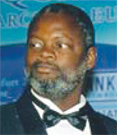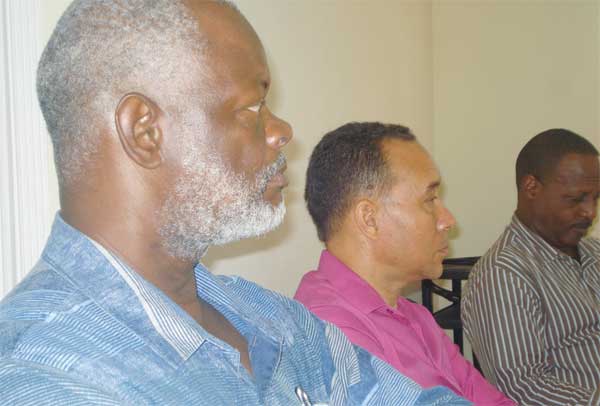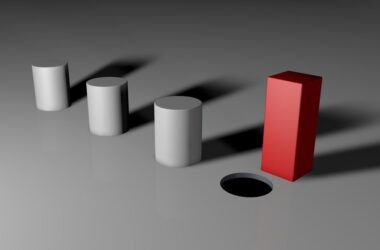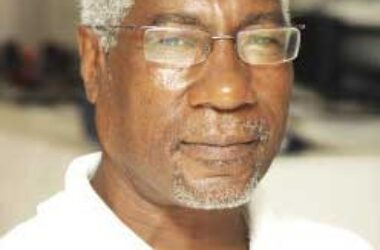
MANY of us in our National Day readings would have read this quote:
“Saint Lucia was named after Saint Lucy of Syracuse by the French, the island’s first European settlers, and the only country in the world named after a woman”.
I dare to say to you that this is inaccurate and part of a continued gross misrepresentation of our history, as the French came long after there was a record of a name given to our island. You would also have read that the oldest record of Saint Lucia’s name can be found in a Spanish Cedulla of 1511, where a place called Sancta Lucia is recorded as a Spanish Domain. Yet there is no historical document to support this claim. You would have read that there was a Vatican Globe of 1520 that depicted Sancta Lucia, and in my research I found it that to be also incorrect.
You would have read that Juan de La Cosa drew a map that featured Saint Lucia as “El Falcon”, and I found that to be also incorrect as this was a reference to Venezuela. You would have read that Christopher Columbus spotted Saint Lucia during his 4th Voyage and I found out this to be also incorrect, that Columbus never set eyes upon Saint Lucia. You would have read of a ship wreck of French sailors on 13th December and I found that to also be incorrect as the French had not been in the Caribbean at the time.
Having dispelled all this supposed historical facts as a bundle of inaccuracies and misrepresentation I started my own journey into truth. My research showed that the earliest recorded map of the Caribbean was done by Diego Ribero in 1529 and depicted an island called Santa Luzia, a Portuguese name. In 1542 Alonzo de Santa Cruz produced a map which was used to divide the New World between Portugal and Spain, and this map showed two islands Santa Luzia and Sao Viciente, both Portuguese names. Just maybe, the Portuguese were the ones that gave Saint Lucia its name, and were the ones that found Saint Lucia. It is of interest to note that the Portuguese in 1456 discovered Cape Verde and gave two of the islands the names – Santa Luzia and Sao Vicente. Just maybe there is a Portuguese component of our history, whether it was Portuguese or Spanish it is clear that there was something significant about our island’s name. So we celebrate a National Day that has no historical perspective.
The second aberration that requires correction is the geometry and colour scheme of our national flag.
On March 1st 1967, the national flag designed by Dunstan St Omer was adopted, symbolizing SAINT LUCIA’S status as being self-governed. The description, as stated by Mr. St Omer, was as follows:
‘On a plain blue field, a device consisting of a white and black triangular shape, at the base of which a golden triangle occupies a central position. The triangles are superimposed on one another the black on the white, and the gold on the black. The black ends as a three-pointed star in the centre of the flag. The width of the white part of the triangle is one-and-a-half inches on both sides of the black. The distance between the peaks of the black and white triangles is four inches. The triangles share a common base the length of which is one-third of the full length of the flag.’
The dimensions of the National Flag are 6 ft x 3 ft. In 2003, due to the preponderance of wrong colours and shapes, the government decided to publish the following clarification:
‘Due to concern over the various representations of the National Flag on souvenir items and other memorabilia, and the need for standardization of such items, permission should be sought from the Office of the Prime Minister before the importation of all souvenir items bearing the Coat of Arms and Flag of Saint Lucia. This request is in accordance with Clause 15 of the Third Schedule Part II (Restricted Imports) of the Customs (Control and Management) Act No. 23 of 1990. The official colours, proportions and dimensions of the Saint Lucia National Flag are given as follows: Colours of the Saint Lucia National Flag: Cerulean Blue (Process Cyan 100%), Light Chrome Yellow, Black, White. Proportions of the Saint Lucia a National Flag: Width of the white part of triangle – 1 1/2 inches on both sides of the black; Distance between peaks of black and white triangles – 4 inches; Dimensions of Saint Lucia National Flag: Pole Flag – 6 feet x 3 feet; Hand Flag – 9 inches x 4 1/2 inches; Desk Flag – 6 inches x 3 inches; Casket Flag – 11 feet x 5 1/2 feet. It is also recommended that the Coat of Arms, as the Official Seal of Government, should not be reproduced for commercial use or sale.”
Now, let us look at the trigonometry of the details given by St. Omer on the design of the flag assuming it is 6 ft long and 3 ft wide — for simplicity, 72 inches x 36 inches.
The Golden Triangle occupies the central position, that being where the diagonals of the rectangle meet. So, if you measure 36 inches across and 18 inches up, you should find the apex of the golden triangle.
In the series of isosceles triangles that contain the golden, white and black, the golden base occupies the central position and thus is of a width of 72 inches divided by 3 which is 24 inches.
If the white portions are 1.5 inches wide, then the small isosceles triangle at the top of the triangles has a base of 3 inches and a height of 4 inches, as stated by Sir Dunstan.
By comparing similar triangles, the white isosceles triangle at the top to the large isosceles triangle of the whole internal, then we can look at a small white triangle at the top with a base of 3 inches (close assumptions) and a height of 4 inches and a larger triangle of a base of 24 inches.
It means that the height of the entire triangle in the middle of the flag is 8 x 4 inches, which will be 32 inches. It means that there is a 2 inch space from the top of the large triangle to the end of the flag — and the same space to the base of the triangle and the base of the flag.
Next time you see a national flag, look for these dimensions and you would be surprised to see how many are wrongly constructed. Then go to the corner of Bridge and Jeremie Street, look at the tattered and torn national flag flying in front of the Bank of St Lucia and look across and see in front of Customs, a ragged black flag flying at half mask. This cannot be right.!!













